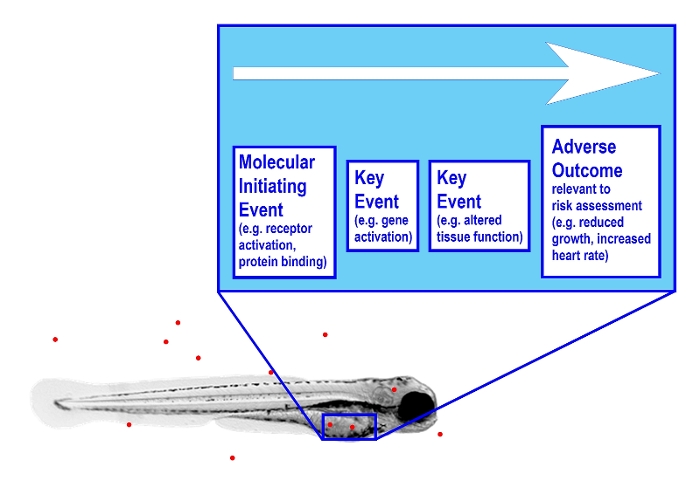Research project
Development of an Adverse Outcome Pathway (AOP) for metallic nanoparticles
What is the mechanism of action preceding a physiological effects induced by metallic nanoparticles?
- Duration
- 2016 - 2019
- Funding
-
 NWO Vidi 2013
NWO Vidi 2013
- Partners

Short abstract
From describing what happens to understanding how it happens.
Project description
1. Scientific relevance
In the past decade, production of nanoparticles has increased exponentially due to their manifold desirable properties finding applications in electronics, medicine, cosmetics and consumer products such as wall paint or sports clothing. Inevitably, nanoparticles end up in (aquatic) environments, where they potentially stress organisms. Once a compound is taken up and interacts with biomolecules within an organism, the cells respond by fine-tuning their transcriptome. In most cases, the cell can restore the balance and ensure normal function. But in some cases, the unknown compound, such as nanoparticles, can trigger an ongoing stress situation impairing cellular function and leading to adverse physiological changes.
2. Material & Methods
In this project we investigate the event cascade induced by metallic nanoparticles applying the Adverse Outcome Pathway (AOP) concept in zebrafish embryos. AOPs provide a description of key events (KE) following one after another at different levels of biological organization (molecular, cellular, tissue, organ, organ system, individual) leading to induction of the relevant end-point of toxicity. Using high-throughput sequencing we will explore affected functional biological processes and link it to measurable downstream KE.

Conceptual representation of a hypothetical Adverse Outcome Pathway (AOP) in zebrafish embryos induced by metallic nanoparticles.
At the Cell Observatory powerful screening systems are frequently applied revealing compound induced molecular toxicological pathways. Among them are transient expression assay using fluorescent microscopy, morpholino approach to block downstream signaling and analyse the biological function of the transcriptome response, or immunostaining for visualization and localization of the protein of interest. Depending on the affected pathway a suitable assay will be chosen to determine KE.
3. Social relevance
For most of the chemicals we assess biologically relevant endpoints such as lethality or reproductive effects, but suprisingly we do not understand the mechanism that causes the harm. However, only when we understand the mechanism, we can develop robust methods to predict effects. Based on the knowledge gained in this project, in vitro methods can be developed which allow to screen many more nanoparticles in a shorter amount of time, for lower costs and without the use of animals. Moreover, the results are intended to support regulatory applications.
